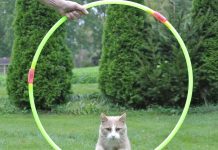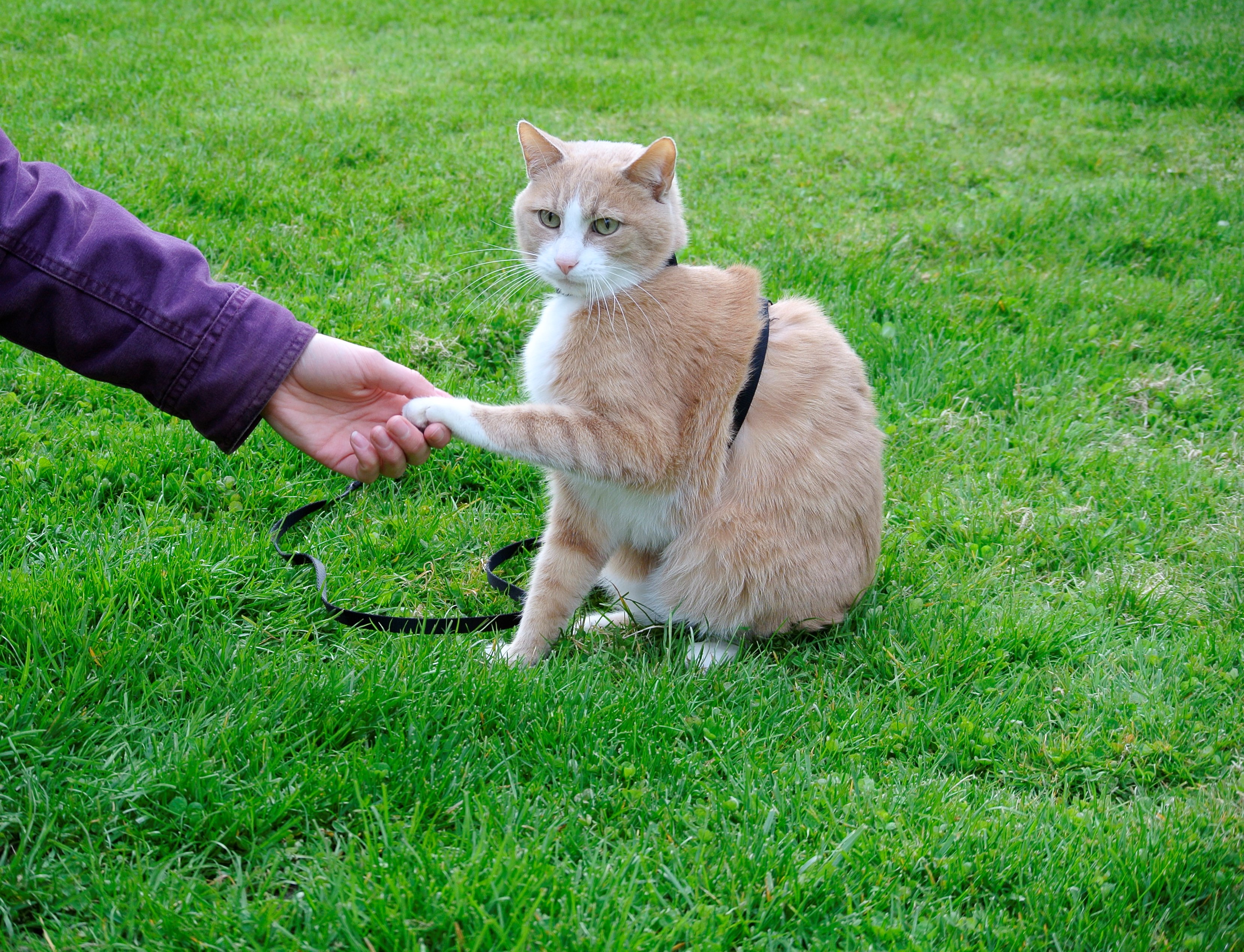Difficulty: Easy-Medium
Verbal Command: Shake!
Hand Signal: outreached hand
Helpful Hint: Make sure that your “shake” hand is clean and free from the smell of treats. You want his paw in your hand, not his nose!
Make a positive association with holding the paw
Teaching your cat to shake paws is an easy trick for cats that already know how to sit and are accustomed to their paws being touched, but can be difficult for cats with an aversion to humans handling their front paws. If you haven’t checked out the “Stress-Free Nail Trimming” article in the Basic Housecat section, you should read that and work on desensitizing your cat’s paws. Not only do you want your cat to accept his paws being touched for this trick, but you want him to be motivated to have his paw handled. Starting with kitty in a sitting position, pick up kitty’s paw and start rewarding kitty with treats and verbal praise. Stop giving treats as soon as he pulls the paw away so that he can learn paw-touching = reward. Have treats at the ready with your non-shaking hand so that your timing can be efficient.
Tap the wrist
Once kitty is comfortable with you handling his paws, give a gentle tap (or taps) on the back of the wrist that you would like to “shake”. When kitty moves the paw off the ground, start rewarding and stop tapping. Quickly (but without alarming the cat) move your open palm under the raised paw and continue to feed treats. Continue with this until kitty reliably raises the paw with a tap.
Only treat when the paw is in your hand
For this step, you will progress to kitty understanding that a tap on the wrist means he should put his paw in your hand. Phase-out treats when kitty just raises his paw, but give treats when he puts effort to move his paw toward your shaking hand. Once he understands he needs to put effort to move his paw to your hand, only give treats when he places his paw in your palm.
Introduce the hand signal
Now that your cat can respond quickly to a gentle tap, you can introduce the hand signal as the cue. Show your palm to kitty a moment prior to the tap. After the tap, he will place his paw in your palm. Continue this and make each tap gentler so that kitty starts to anticipate and read your body language.
Remove the tap
At this stage your cat is beginning to understand that the outstretched palm means he should place his paw in your hand. Since your tap is hardly a touch at this point, you can start offering your palm to your cat and get rid of the tapping step. Give your cat a moment to process your outstretched hand and think about it. After some trial and error on his part, he will place his paw in your palm in order to receive the reward. If he sniffs your outstretched palm, remove your palm for a moment to allow him to focus (and make sure it doesn’t smell like treats!). Keep these sessions especially short and end on a good note- it takes a lot of effort for kitty to put things together!
You’ve taught your cat how to “Shake”!
Your cat now knows how to place his paw in your outstretched hand, so give his paw a gentle shake! Now that you’ve accomplished “shake”, you can progress to reading the “high-five” article! For any trouble-shooting, please contact the main cat at Maestro@trainedcat.com.














Been working on this with my kitty for a while now and he seems to be slowly picking it up. Thanks! 🙂
Congrats on your kitty accomplishment! Don’t be afraid to send us an email if you have any questions!